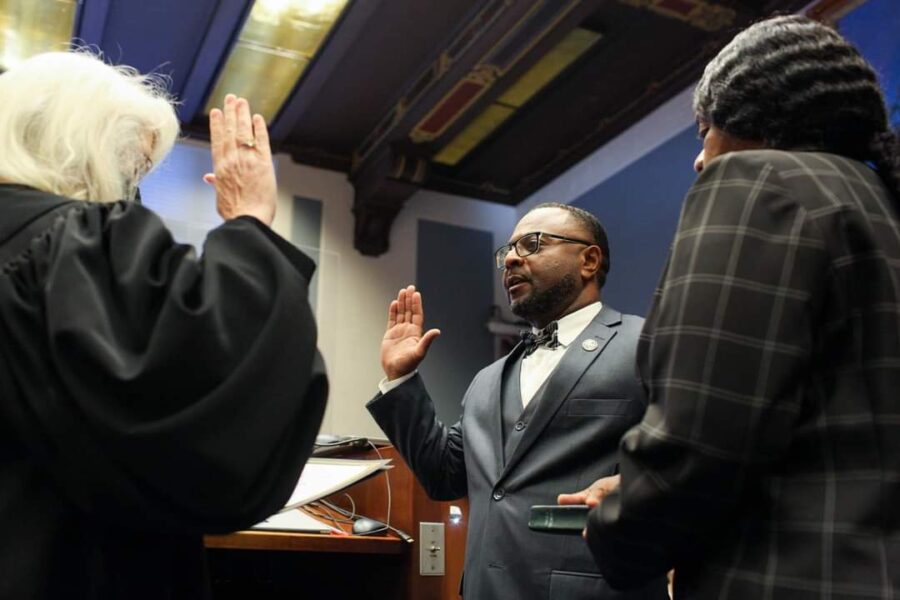Thrive
Should a special election decide City Council vacancies?

St. Petersburg City Council members are finding no easy solutions to mitigating an emotionally taxing appointment process, to fill vacancies while ensuring residents have proper representation.
In October 2022, Chair Brandi Gabbard requested a discussion on filling vacancies through a special election immediately after the council selected John Muhammad to represent District 7. He replaced Lisa Wheeler-Bowman, who resigned in September 2022 amid allegations that she had moved out of her district.
Councilmember Lisset Hanewicz simultaneously filed an identical motion as many voters felt they lacked a voice throughout the process. The Public Services and Infrastructure Committee broached the subject in July and continued the complex discussion Nov. 9.
“I unite with the sentiment of having voters decide and being able to choose their representative,” Muhammad said. “I would prefer to put that to voters and let them decide who will represent them on council.”
The city charter gives council members 45 days to set an appointment process, open applications, review submissions, interview the candidates and select a new representative. Assistant City Attorney Brett Pettigrew previously noted that the issue arose 25 times in St. Petersburg’s history, with 21 vacancies filled through appointments.
Hurricane Ian and redistricting efforts impeded the process in 2022; however, St. Petersburg’s timeframe is significantly longer than several comparison cities. Miami’s city council must fill vacancies within 10 days, while Tampa provides a 30-day window.
Pettigrew discussed three options with the committee. The first is to leave a seat empty until a special election, which is considerably more time-consuming and could cost the city over $350,000.
City officials could adopt an “either-or” model with the vacancy’s timing determining a replacement method. Multiple comparison cities, including Tampa and Orlando, employ that system.
The third option, currently used in St. Pete, is a “combo” method where the council makes an appointment to avoid a prolonged vacancy. The selection must then run in the following election.
“All of these are interrelated,” Pettigrew said. “This is ultimately a complicated policy matter.”
The supervisor of elections
Julie Marcus, Pinellas County’s supervisor of elections, will influence any municipal changes. She has stated that a public vote to fill a council vacancy can only occur in conjunction with regular elections.
Pettigrew noted the city has previously held independent special elections. However, he called that an “incredibly complicated scenario” due to timing issues.
“There’s ultimately no way to predict exactly how quickly that special election would occur,” Pettigrew added. “Even if the supervisor was more flexible in scheduling.”
Multiple council members asked for additional clarity from the election’s office on how the city could hold special elections as a “fallback.” Despite wanting residents to choose their representative in a citywide vote, many also believe the current process is the most efficient.
A supermajority
Gabbard and several colleagues would like a supermajority to decide the appointment process. That would require at least five “yes” votes on a seven-person council with one vacancy.
Council members selected Muhammad with a four-person simple majority. Gabbard suggested following Clearwater and Pinellas Park’s model by holding a special election if a candidate fails to gain the required votes.
Muhammad was among those who supported that system. “I definitely think the magnitude of someone representing a district should be a supermajority,” he said.
Councilmember Gina Driscoll agreed and suggested appointing a “placeholder” not campaigning for the seat to serve on the dais until an election. Clearwater city officials selected interim Mayor Brian Aungst through a similar process.
Muhammad noted the learning curve associated with serving on the council and said a fill-in should have prior experience. Aungst previously served as Clearwater’s mayor.
Further complicating matters is that requiring a supermajority would increase the likelihood of not reaching a consensus. Pettigrew said council members could “keep trying” or “ultimately decide to flip a coin.”
“I don’t wish that upon anyone,” he added. “But federal elected officials in Congress have been elected by drawing straws.”
Gabbard expressed strong support for a supermajority vote and opposition to a placeholder. She and other council members suggested keeping the seat vacant for five or six months.
Gabbard said Aungst was an irreplicable “perfect example.” She called it an insult to residents “to say we’re just going to throw somebody in there.”
Following extensive debate, the committee agreed to request additional clarity on timelines for a special election to fill council vacancies as a “fallback provision.” Pettigrew will present that information in 2024.








S. Rose Smith-Hayes
November 15, 2023at5:38 am
The process used to select Councilman Muhammad works for me, I do not wish for the seat to be vacant. However, the idea of having a former council member or ex public official ‘stand in’ is also a good idea.